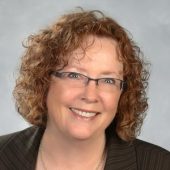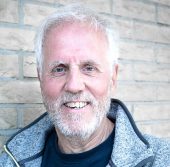Teachers listening to students. Hearing just happens; listening takes our intentional effort.
For one hour a week, I am teaching my thirteen-year-old grandson, Eli. He is full of budding independence. To be truthful, the first class was a nightmare. (How did I get into this?) In week two, I got smarter. “Grandma, can I end this Zoom call?” After a tentative pause, I said, “Sure, your choice, Eli.” His response was, “Oh, I didn’t want to, I just wondered.” And what followed was an engaging hour-long conversation about Alfred Noyes’s The Highwayman, romantic poetry, love, relationships, character, and onomatopoeia! The next week, after listening to Eli declare, “I’m not good at art!” we did a digital gallery tour of work by students who redefined what art is. After exploring this “alternate art” gallery, Eli was ready to talk about art he is good at and teach his artist Grandma her first lesson in pixel art. This week, I thought we would move on to digital presentations, but he moved on to internet memes. I listened. I learned. And we settled on him creating a digital presentation on favorite memes to help adults “get them.” I just keep listening.
We nudge kids to “listen up,“ but perhaps teacher listening is even equally important. What are our learners telling us about themselves: in class, after class, in their writing, journals, collaborations, in daily chatter? Shhhh, listen. In all the noise lie clues to their needs, talents, enthusiasms, and passions, the very things that drive human engagement and learning. “I hear you” is not the same as “I am listening.” Hearing requires open ears; listening requires an open mind and, often, an open heart.
Talk about teachers listening to students – Kindergarten teachers are great listeners! Many are terrific documentarians as well, moving around the room with a clipboard capturing bits and pieces — observational evidence — clues on growth, needs, and next steps. At the end of each day, they add the new observational (and aural) data to a file on each child, building an emerging picture of who the child is becoming. Of course, this would work for big kids as well. In the same way, a Possible Projects Board in a classroom becomes a source of ideas for everyone, a My Students Folder becomes a source of interests, talents, skills, wondering, passions, and progress, pointing to the next big learning project.
The listening it takes to mentor students toward personal discovery, and deep learning requires courage. The word courage comes from the Latin “cor,” heart. Brené Brown, who studies human connection, challenges us to become “whole-hearted” in our living and loving and listening. (This is worth a deep listen.)
So, for Eli, I keep listening. His being bewitched by 4-leaf clovers and then 5-6-7-8-leaf clovers led to Boolean searches. Being wild about playing solitaire led to studying probabilities. If I listen whole-heartedly, what can I learn from his passion for memes and Minecraft? Perhaps, I can learn how to mentor his interests in ocean life and the world being a just place into passions that impact our society or save life on earth. What is captivating your learners? How might it matter? Listen whole-heartedly!











